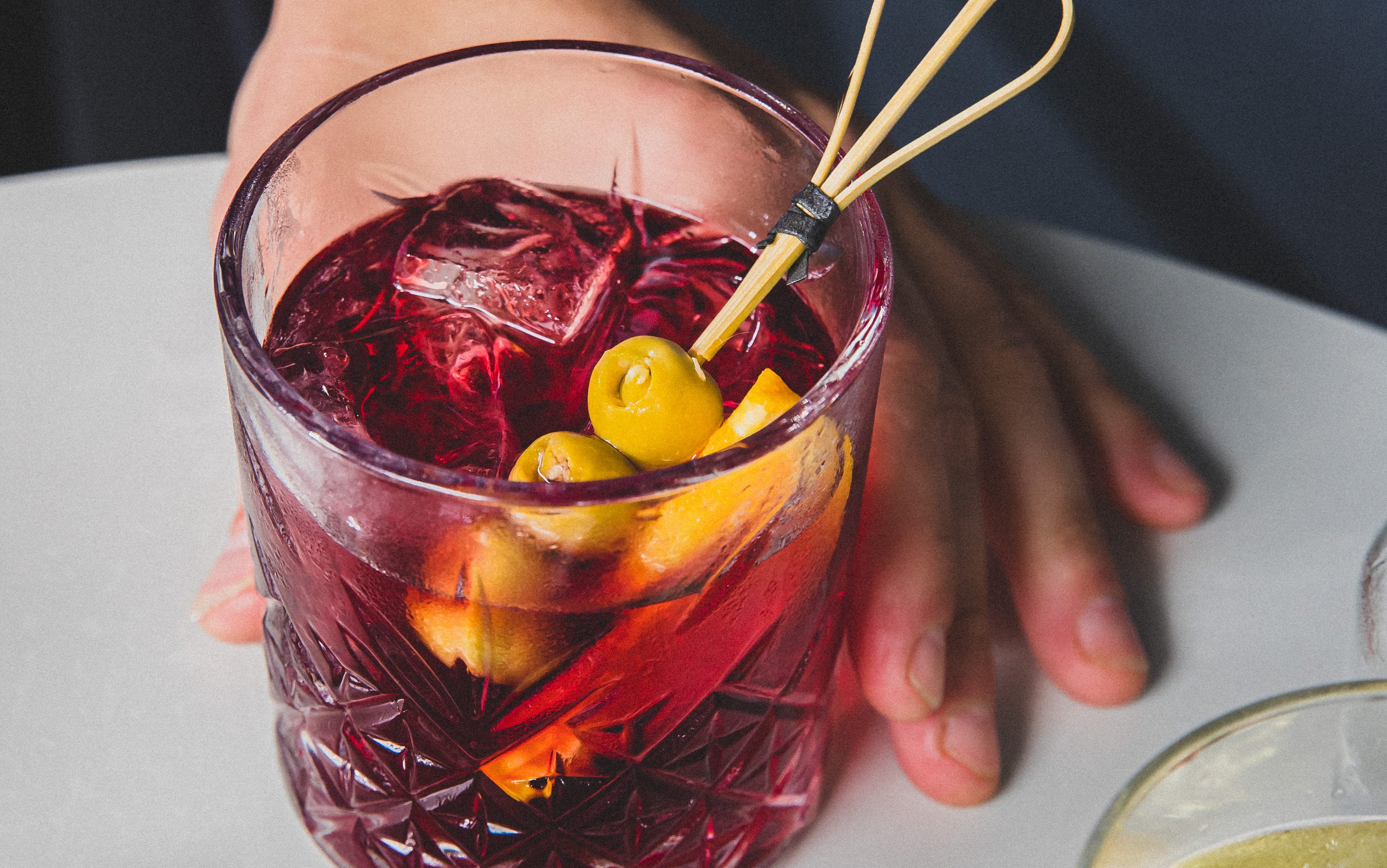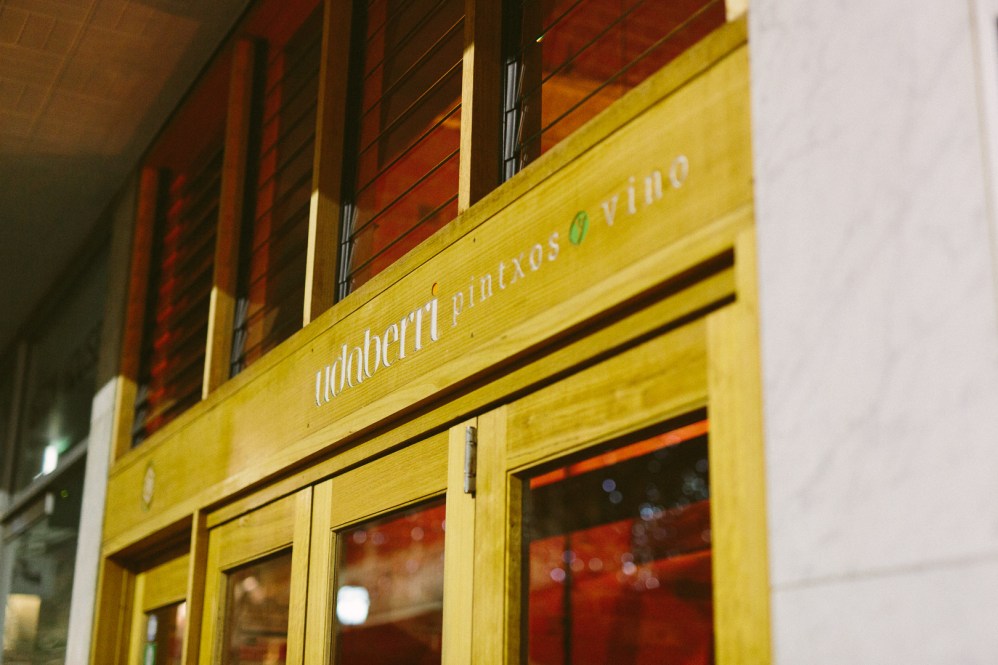Vermouth may be the supporting act to gin or vodka in a martini, but the wine-based aperitif is not to be overlooked. While some guests may not be familiar with vermouth, its versatility and unique flavour profile has made it an essential bottle behind the bar.
Hospitality speaks to Love Tilly Group Operations and Beverage Manager Melissa Moore and Ben Walsh from Adelaide’s Udaberri about using vermouth across different applications and how they predict the fortified wine will track in the near future.
Vermouth, also known as vermut, is part of the aromatised wine category, and is produced by combining fortified wine with botanicals. It dates back to ancient
Greece, where Hippocrates made a spirit from macerated wormwood, flowers, and
wine for medicinal purposes. The spirit was consumed by Romans and appeared
again in the Middle Ages where it was used in a similar medicinal manner. But it was in the Italian city of Turin in the late 18th century where the modern version of vermouth was born. Makers in Chambéry, Lyon, and Marseilles in France as well as producers in Spain went on to create versions of vermouth that were either sweet red or dry white in style.
More recently, distillers are experimenting with vermouth to create an array of options ranging from extra dry to sweet using white, red, and Rosé wines as a base. The use of botanicals has also had a profound effect on the flavour profile of vermouth, with native herbs and spices resulting in a unique drinking experience. Ben Walsh from Adelaide pintxos bar Udaberri has seen the availability of different vermouths grow over the years.
“Vermouth’s profile is becoming more varied, dependent on style, [in terms of] how and where it is made,” he says. “But it’s usually a balancing act of sweet, dry, bitter, floral, and herbaceous characteristics.”
Herb wormwood is what sets vermouth apart from other botanical-based spirits
such as gin. According to Melissa Moore of Sydney’s Love Tilly Group, which runs Spanish-style venue La Salut in Sydney’s Redfern, wormwood is the drink’s core ingredient.
“One of the defining characteristics of vermouth is its bitterness, which comes from
wormwood and other botanicals used in its production,” she says.
Wormwood is a bitter plant that has long been used for medicinal purposes and is also the base ingredient to flavour absinthe. It is how the aromatised wine got its name, with the German word wermut pronounced as vermouth in French.

Vermouth is less bitter than other aperitifs such as Campari, Aperol, or Lillet and is more complex due to the wider use of botanicals such as bitters, citrus, and herbs as well as spices including juniper, cinnamon, ginger, coriander, citrus peel, and cloves. The combination of the base wine along with wormwood and botanicals is what creates the wine’s complex profile.
“Vermouth’s unique blend of bitterness, sweetness, and herbal complexity makes it a versatile ingredient in cocktails and a popular choice for sipping on its own,” says Moore.
Speaking of sipping, there are many different ways to enjoy vermouth. It can be served neat, on the rocks, or with a citrus twist. For a longer option, team with soda water or tonic. Vermouth is a good drink to start a meal with, and it plays a crucial role in many classic cocktails.
“Vermouth works really well in aperitif-style cocktails to excite your stomach for what is to come,” says Walsh. “It also pairs well with higher-proof spirits to knock some of the edge off and adds floral, sweet, or bitter characteristics.”
At Udaberri, Walsh and the team serve a variety of vermouths that are a nod to the venue’s ties to northern Spain. Casa Mariol Vermut Negre made from 100 per cent Macabeo grapes in Spain; France’s Dolin Dry; Italy’s Cocchi Americano di Torino; Punt e Mes; and Cinzano Rosso are all currently served at the venue.
Cocktail-wise, vermouth (both dry and sweet) is a key ingredient in martinis alongside gin or vodka. Sweet red vermouth is a lead in a Negroni teamed with gin and Campari and also plays a role in a Boulevardier, an Americano and a Rob Roy.
Over at La Salut, Moore and the bar team have created a range of cocktails where vermouth shines, including their take on a Cosmopolitan with vermouth and Ketel One vodka. Other house cocktails include the Marianito with vermouth, Santamanía Reserva gin, and Campari and the Palmetto with Ingenio Manacas Extra Añejo rum with Primitivo Quiles Vermouth Rojo and orange bitters. But ultimately, they like to serve vermouth on the rocks with a palillo of aceitunas (a toothpick of Spanish anchovy-stuffed olives) and some soda on the side.
“We love it just how we serve it, olives and all,” says Moore.
There are 13 vermouths on pour at La Salut from Spain and Australia. Some of the styles include a txakoli-based white vermouth from Astobiza to the darker Macabeo-based vermouth Vermut Negre. Closer to home, the venue’s house La Salut Vermut has been made by Bathurst producer Sam Renzaglia and reflects an amaro style with its bitter, herbaceous notes and inclusion of 20 types of wormwood, most of which are local.

The varied styles of vermouth mean food pairing can be straightforward. Walsh opts
for Mediterranean cuisine due to its salty characteristics, while Moore notes vermouth’s profile also suits rich, savoury, and spicy foods.
“The herbal and slightly bitter notes complement roasted meats or braised dishes,” says Moore. “The sweetness also makes it a good match for spicy or slightly acidic food.”
Both Walsh and Moore agree vermouth is being more widely offered in venues. Walsh has also seen an increase in the number of producers making a broader range of styles.
“More and more wineries and distilleries are adding some form of vermouth to their offering — 10 years ago I couldn’t remember anything being offered,” he says. “The first vermouth on the Australian market seemed to be dominated by native botanicals, now it’s not so much the case. It’s great to see such versatility in the category.”
Moore agrees, and says vermouth is gaining ground in the drinks space. “I believe it’s an untapped market,” she says. “Like sherry and Madeira, vermouth used to be seen as a drink of another time … bottles gathering dust on your parents drink trolley.”
Walsh and Moore are pushing vermouth where they can at their venues, and the move has yielded good results so far. “We don’t see a lot of clientele drinking vermouth unless it’s in a cocktail, but it is easy to recommend and is a great gateway into all things bitter,” says Walsh.
Moore agrees: “People are surprised they love vermouth so much, especially if they haven’t tried it before,” she says. “Every guest we slide a vermouth over to at La Salut loves it.”
Vermouth in Australia is slated to continue to grow in popularity both as a standalone drink and as an addition to cocktails — including those that are lower-ABV.
“The explosion over the last decade of vermouth-based cocktails such as the Negroni and the Americano means the drinking public has seen there is more to vermouth than Cinzano or Martini Bianco,” says Moore.
The lower levels of alcohol in vermouth has also contributed to its use across the bar scene. The quality of vermouth and the variety found in the spirit is sure to play a role in consumer interest, too.
“There is a much stronger emphasis on quality vermouth being both made [locally]
and brought into Australia,” says Walsh. Moore agrees with the sentiment: “With excellent examples coming into the market all the time and new imports arriving, the future is looking very bright indeed.”
Filed under
Sponsored Content

Celebrating coffee moments with Buondi
Sponsored by Nestlé Professional

Meet Force, the new player in commercial cookware
Sponsored by Tomkin
Trending Now
Resources
Lorem ipsum dolor sit amet, consectetur adipiscing elit. Fusce ac ornare lectus. Sed bibendum lobortis...
Lorem ipsum dolor sit amet, consectetur adipiscing elit. Fusce ac ornare lectus. Sed bibendum lobortis...
Sign up for our newsletter
